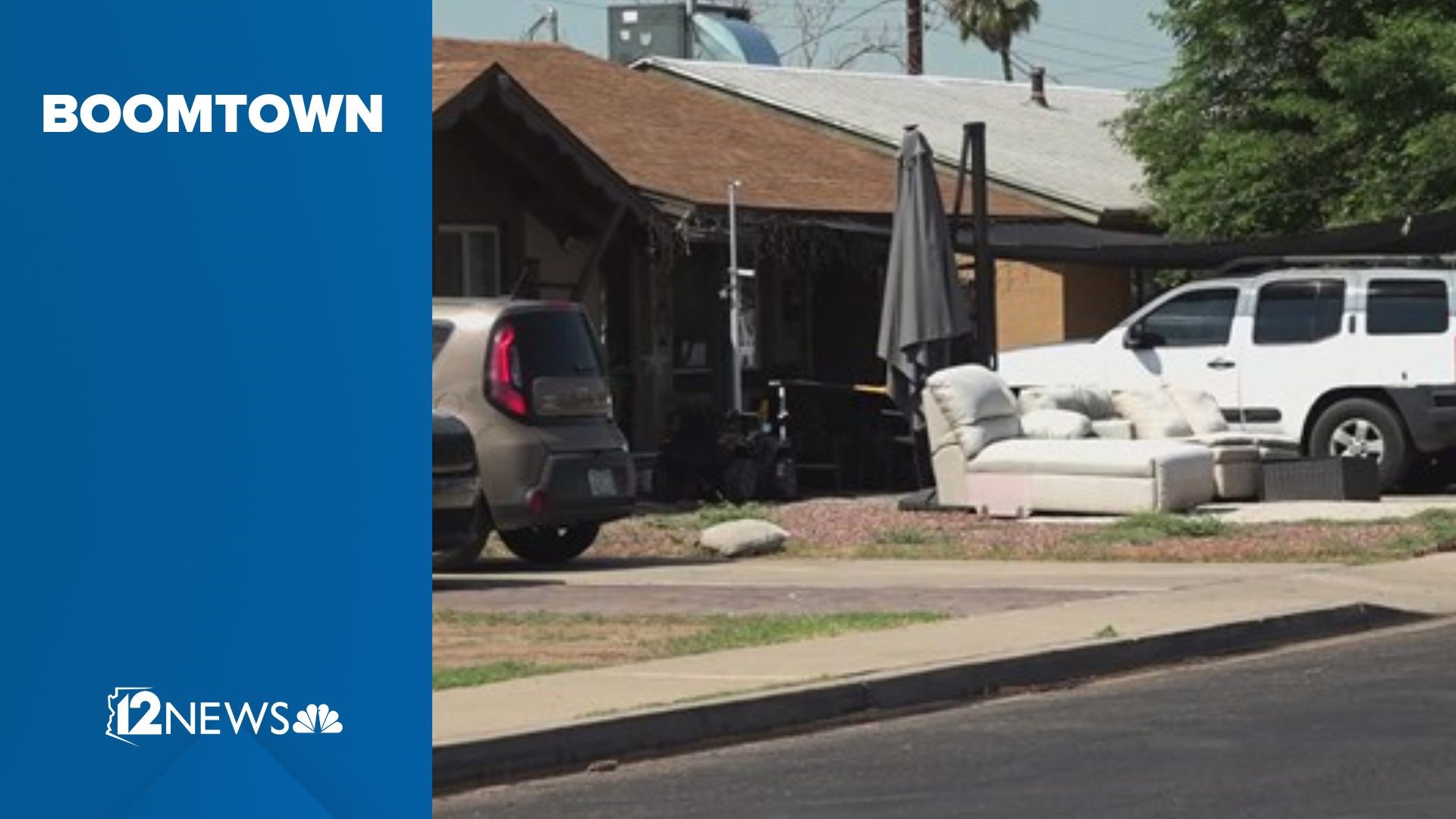PHOENIX — Daniel Barajas grew up down the street from the restaurant he now owns.
"It was, like, perfect," he said. "(I) went to school at Estrella Middle School for a little bit, lived here for a little bit. Went on my own, went on my journey, and came back around."
Barajas used to be a cop in Los Angeles. Now, he's a Maryvale business owner of El Cafezito, a somewhat unlikely restaurant and coffee shop.
It sits in an old strip mall near 75th Avenue and Indian School Road and specializes in crepes. Savory crepes, dessert crepes, breakfast crepes ... he has it all.
And coffee. Being a former cop, Barajas said he sells what he knows.
“We were looking for the kind of like, the Latin community, the Hispanic community, and what better place than here in Maryvale?" he said.
A lot of business owners would not have picked Maryvale. The neighborhood has a reputation as having high crime rates, mid- to low-income, and little business investment.
Barajas knew all that. And that's why he came back.
"I just love the circle about it," he said. "And now I'm able to create something for the community here."
Maryvale was arguably the reason Phoenix boomed in the first place. In 1961, John F. Long started developing the massive community West of downtown Phoenix, marketing and selling it.
And sell he did. At its height, Long was building seven Maryvale houses a day. Long promoted the brand-new neighborhood with a promotional film featuring movie legend Buster Keaton.
They were cookie-cutter homes, mostly the same handful of designs with names like The Shannon and The Lexington. The Shannon sold for $10,405, about $103,000 today.
To support his new community, Long also built a large shopping center with a grocery store and swanky restaurant called the Lantern Inn.
Eventually, it would all change.
A slow decline
In the 1970s and '80s, Maryvale underwent a huge change, and for a lot of reasons.
When Long built the neighborhood, it was almost entirely white. Thanks to tradition and discriminatory housing practices that were legal at the time, most minorities lived south of US 60.
“During the 70s and 80s, what you wind up having are a consequence of policy decisions that exacerbate ongoing social conflict," Dr. Anthony Pratcher said. Pratcher is a professor at ASU who studied the Maryvale neighborhood.
Pratcher said there was concern over a possible cancer cluster in Maryvale, which may or may not have existed depending on which government agency you ask. That led to some people moving out of the neighborhood.
The Savings and Loan crisis in the 1980s hit the area hard, he said, and foreclosures went up. More people left.
And the City of Phoenix condemned what is known as the Golden Gate Barrio, the area just West of Sky Harbor airport, to make way for airport expansion. Pratcheer said the people who lived there had to go somewhere – and Maryvale was close and available.
All of that resulted in a community that was mostly white becoming 76% Hispanic, according to the latest available Census numbers.
"You just have a continued disinvestment which winds up having a really negative reputation as a neighborhood," Pratcher said.
Pratcher calls the effect "benign neglect." Business development slowed, poverty increased, and crime increased as well. According to an ASU study on Maryvale, so did juvenile delinquency and gangs. the study said crime started going down when Phoenix police began targeted enforcement.
But the reputation remained.
Phoenix City Councilwoman Betty Guardado moved to Maryvale because it reminded her of her old neighborhood in South Central LA.
Guardado said she believes the neighborhood can get its reputation back, but only with help.
"I think it takes work," she said, sitting at a table at El Cafezito. "We can, and I am hopeful."
"We see crime and stuff like that," Barajas said. "We can complain about it, but what can we do to kind of help it out and fix it?”
For Barajas, that's El Cafezito. Bringing his optimism back to the neighborhood that could surely use some.
Boomtown
In our “Boomtown” series, 12News takes a look at the Valley’s explosive growth over the past few decades, the consequences that came with it and a look at what it all means for our future as more than 1.5 million people are expected to move to the Valley by 2040.

